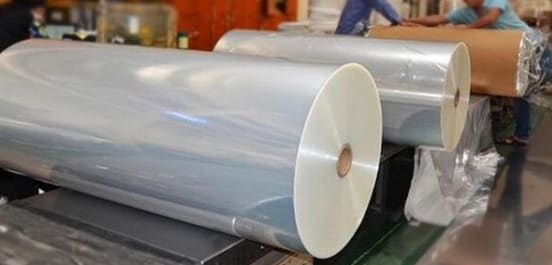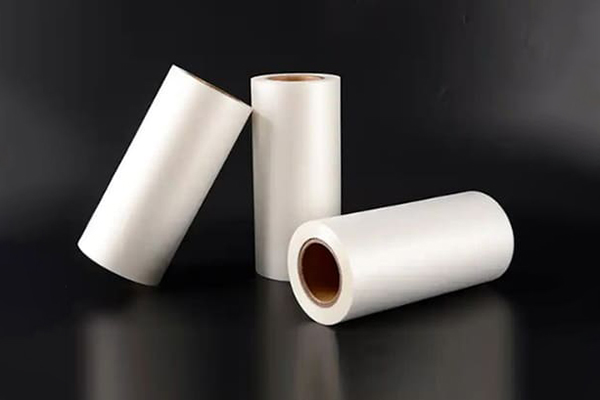In the world of packaging, plastic films play a crucial role in protecting and preserving products. Among the various types of plastic films available, BOPP (Biaxially Oriented Polypropylene) and CPP (Cast Polypropylene) are two of the most commonly used. While they may seem similar at first glance, they have distinct properties that make them suitable for different applications. This article explores the key differences between BOPP and CPP plastic films, their unique characteristics, and where they are best utilized.
Understanding BOPP Plastic Film
BOPP stands for Biaxially Oriented Polypropylene, which refers to the manufacturing process that the film undergoes. In this process, polypropylene film is stretched in the machine direction (longitudinal) and the transverse direction (across). This biaxial orientation significantly enhances the film’s strength, clarity, and barrier properties, making it a popular choice in various packaging applications.

Key Characteristics of BOPP:
- High Clarity and Gloss: BOPP film is known for its excellent clarity and gloss, making it ideal for packaging products that require an attractive presentation, such as snacks, candies, and other consumer goods.
- Good Barrier Properties: BOPP offers good moisture barrier properties, which help preserve the freshness and shelf life of products. However, it has limited oxygen barrier properties, which may not be suitable for all types of products.
- High Tensile Strength: BOPP film has a high tensile strength due to its biaxial orientation, making it resistant to tearing and punctures. This strength makes it ideal for use in packaging applications that require durability.
- Printability: BOPP film has excellent printability, allowing for high-quality graphics and branding to be applied directly to the film. This makes it a preferred choice for packaging that requires vibrant and detailed designs.
- Heat Sealability: While BOPP film has many desirable properties, its heat sealability is relatively limited. BOPP films are often laminated with other materials that provide better sealing properties to address this.
Common Applications of BOPP:
BOPP is widely used in the food packaging industry for items such as potato chips, candies, and baked goods. It is also used in the labeling industry, where its clarity and printability make it ideal for producing labels for bottles and containers.
Understanding CPP Plastic Film
CPP stands for Cast Polypropylene, which is produced through a different process known as casting. In this process, molten polypropylene is extruded onto a chill roll, where it solidifies and is then wound onto a roll. Unlike BOPP, CPP film is not oriented, giving it different characteristics that make it suitable for other applications.
Key Characteristics of CPP:
- High Seal Strength: CPP film is known for its excellent heat sealability and high seal strength, making it ideal for applications that require strong and reliable seals. This property is particularly important for packaging products that need to be tightly sealed to prevent contamination or leakage.
- Good Flexibility: CPP film is more flexible than BOPP, making it easier to work with in certain packaging processes. This flexibility also allows CPP to conform to irregularly shaped products more easily.
- Moderate Clarity: While CPP film has good clarity, it is generally not as glossy or clear as BOPP film. However, it is still suitable for many packaging applications where high clarity is not a primary requirement.
- Resistance to Puncture and Tear: CPP film is resistant to puncture and tear, although it does not have the same tensile strength as BOPP. This makes it suitable for packaging products that require some level of durability but do not need the high strength provided by BOPP.
- Barrier Properties: CPP has moderate moisture barrier properties but does not provide as effective a barrier as BOPP film. However, it can still be used for packaging products where moisture control is important.
Common Applications of CPP:
CPP is commonly used in food packaging for products such as bread, cheese, and fresh produce. It is also used in the medical and pharmaceutical industries for packaging items that require a strong seal. Additionally, CPP is used as a lamination layer with other films to enhance the overall performance of the packaging material.
Comparing BOPP and CPP
When comparing BOPP and CPP, it’s important to consider the specific needs of the packaging application:
- Clarity and Appearance: BOPP is the better choice for applications where high clarity and a glossy finish are essential, such as packaging for snacks or consumer goods. CPP, while clear, does not offer the same level of gloss and is more suitable for applications where appearance is less critical.
- Seal Strength: CPP excels in applications that require strong heat seals, such as packaging for products that need to be airtight or leak-proof. BOPP, on the other hand, often requires lamination with other materials to achieve the necessary seal strength.
- Strength and Durability: BOPP’s high tensile strength makes it ideal for packaging applications that require resistance to tearing and punctures. CPP, while durable, is more flexible and better suited for applications that require a material that can conform to various shapes.
- Barrier Properties: BOPP generally provides better moisture barrier properties, making it suitable for products that need protection from moisture. CPP’s barrier properties are moderate but sufficient for many food packaging applications.
Conclusion
BOPP and CPP plastic films each have their unique strengths and are suited to different types of packaging applications. BOPP is ideal for situations where clarity, strength, and moisture barrier properties are paramount, while CPP is preferred for its superior seal strength, flexibility, and durability. Understanding the differences between these two types of films can help manufacturers and packagers select the right material for their specific needs, ensuring that products are well-protected and presented in the best possible way.
Post time: 09-06-2024


